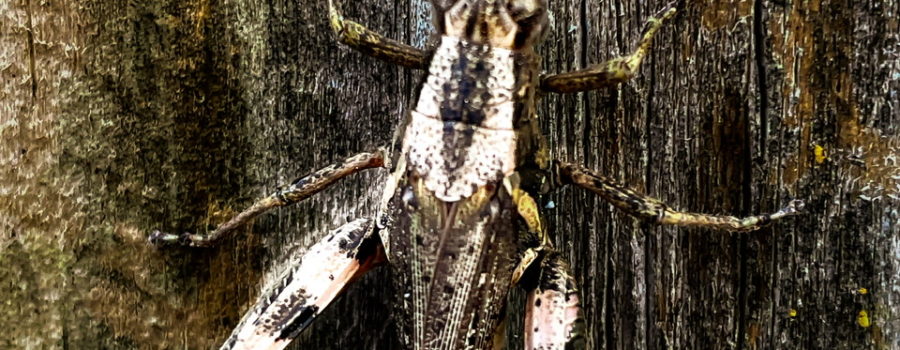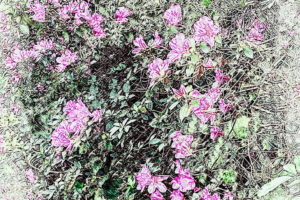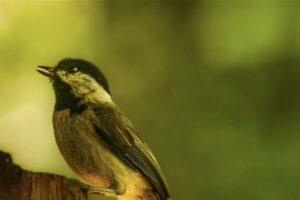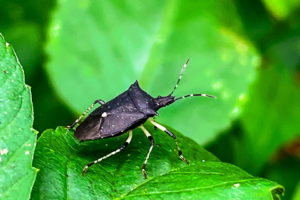The Iconic Red-legged Grasshopper is Important to the Ecosystem

Winter has finally arrived in full force in north central Florida. We have had a couple of hard freezes now and another one, the coldest so far, is predicted for tonight. With all this cold, most of our insects are either dead or dormant, so I’m going back into the archives from last fall for one to write about. I don’t really mind getting an opportunity to play catch up and focus on some interesting species that I ran out of time to cover during the summer and fall, but I do miss the photographic opportunities that all those insects offer. There are still things to photograph, but I do miss my bugs!

It was actually last fall when I spotted this red-legged grasshopper (Melanoplus femurrubrum), also known as the red-legged locust. It had been down in the grass in front of my gate and I scared it up onto the fence when I pulled into the driveway. It seemed to be pretty comfortable up on the fence and didn’t mind my presence or my camera. As you can see, it blends in well with the weathered wood. Perhaps it thought I couldn’t see it? The red-legged grasshopper is very common in all of North America and Central America except for arctic areas and some areas of very high elevation. It is so common up north that it is the iconic grasshopper that most people think of when grasshoppers are mentioned. Like most grasshoppers, it’s a vegetarian, eating mostly plant leaves. It can be found in a variety of habitats, most of which are open and sunny with grasses or other vegetation. More specifically, it’s usually found in meadows, prairies, old fields, yards, roadsides, and grassy vacant lots. Unfortunately, it is also frequently found in crop fields and vegetable gardens. It is well known for causing damage to crops like alfalfa, soybeans, wheat, barley, and corn, and vegetables like legumes, cabbage, beets, and potatoes. In the wild, it prefers plants like sweet clover, chicory, goldenrod, dandelions, and ragweed.

Red-legged grasshoppers usually have one generation per year. Females lay small clusters of eggs just below the surface of the soil in the fall. These eggs begin to develop, but development is suspended as temperatures drop during the winter. When spring arrives, warming temperatures start the development again. The first instar of the larvae hatch in mid spring. They undergo five molts before reaching their adult form. In northern climates, they tend to mature more quickly and reach maturity at a smaller size than down here in the south. Generally, only the adults fly well, and most of them usually only fly distances of forty feet or so. However, if food is in short supply for some reason, they will develop longer wings, allowing them to migrate to areas with better resources.

Although red-legged grasshoppers often have a bad reputation since they can damage crops, they are also an important step in the food chain. They are a vital first step in getting plant nutrition converted into nutrients for omnivores and carnivores. More specifically, these grasshoppers are an important prey species for many game birds like quail and wild turkeys, as well as small raptors and owls, blue jays, crows, wrens, bluebirds, robins, and many more. Grasshoppers are also preyed on by a variety of other animals including raccoons, bats, foxes, snakes and other reptiles, spiders, other insects like mantises and beetles, and even squirrels when plant proteins are scarce. Some domestic animals such as chickens, peacocks, ducks, and geese also eat these grasshoppers.

You may dislike these grasshoppers as crop and garden pests, or you may love their beautiful colors and interesting lifestyles, but either way, no matter how you feel about them, they are an important part of a balanced ecosystem. As most of you can probably figure, I’m one of those people who enjoys seeing them and letting them do their own thing. I also love knowing that by having them around, I’m also attracting other types of beautiful and interesting wildlife. Which school of thinking do you belong to?
If you enjoy beautiful nature photography and nature inspired artwork as well as informative and interesting nature related content, then you will love this blog. Find out for yourself by subscribing below.





Recent Comments